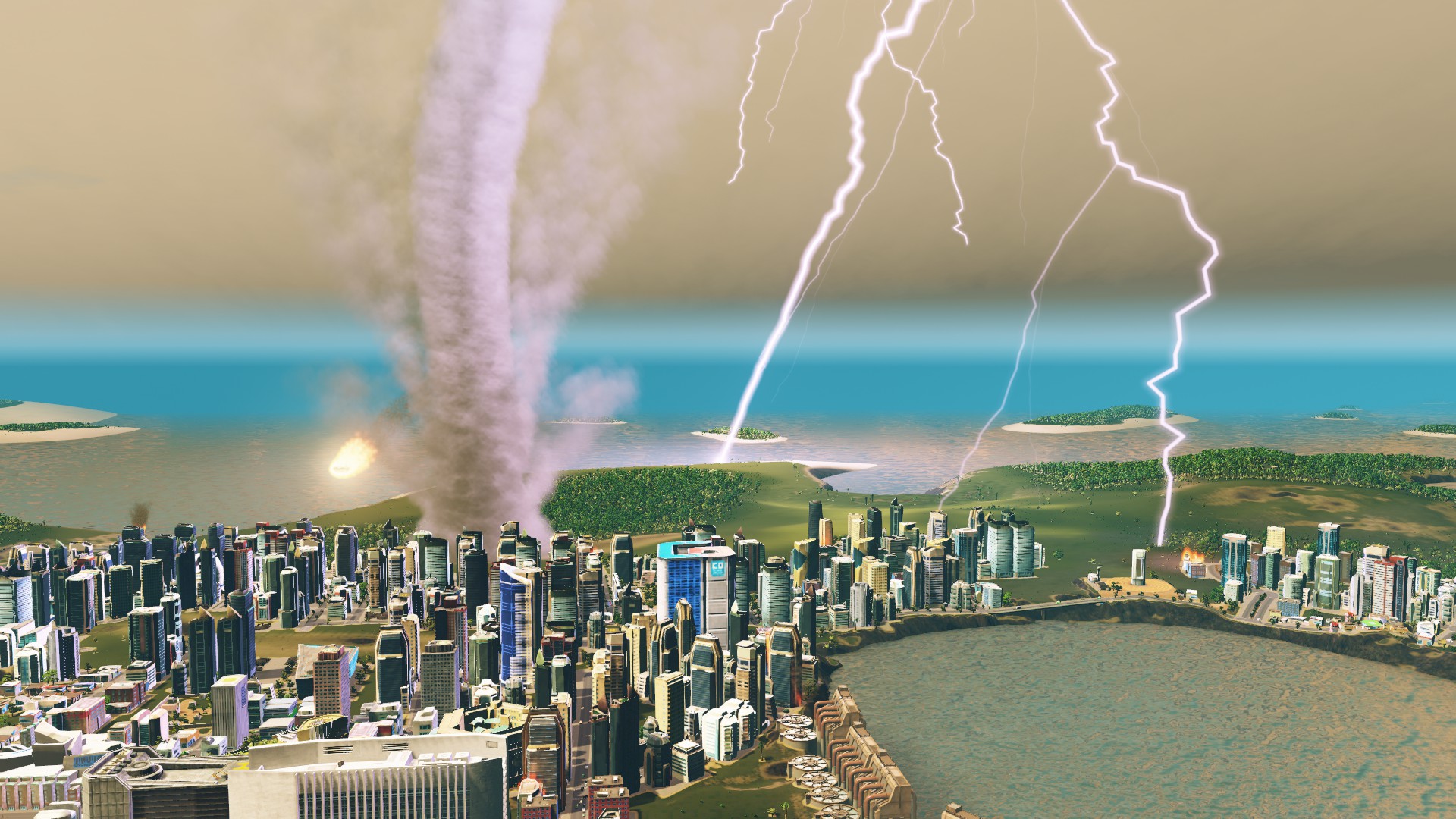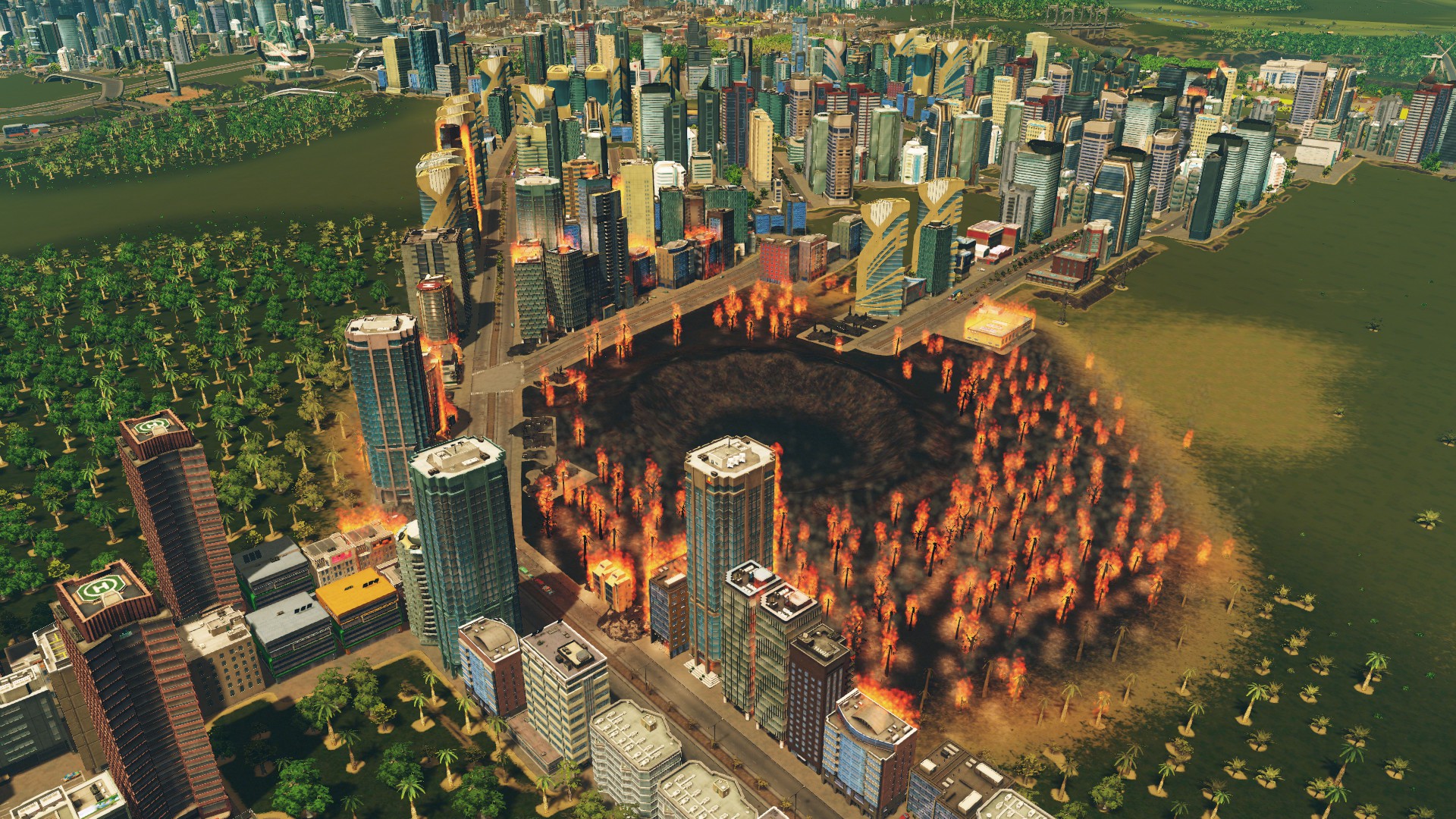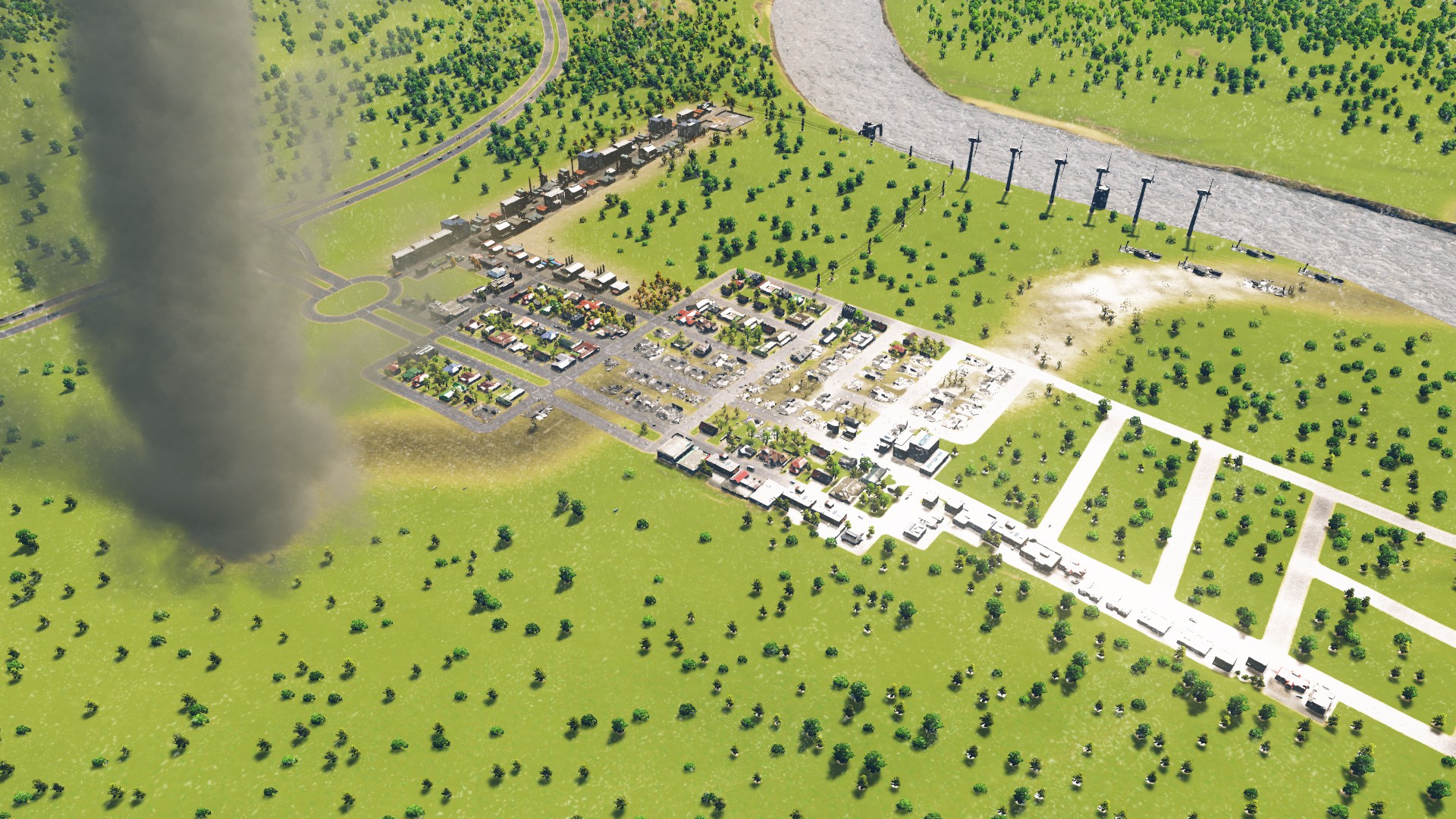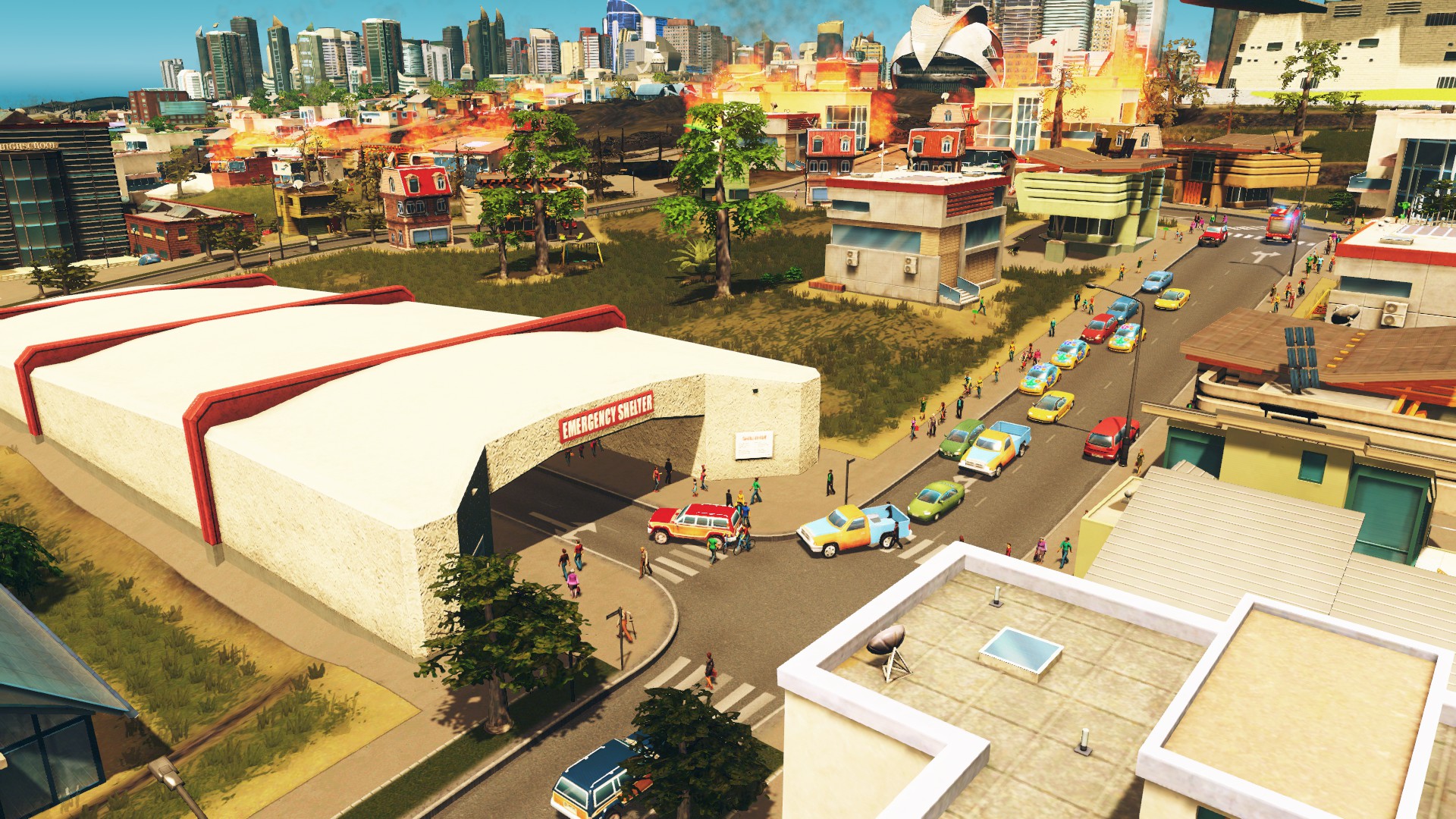Natural Disasters lets you destroy your Cities: Skylines cities, but also save them
It's not just tornadoes and tsunamis, but also disaster preparation and rescue services.

The Cities: Skylines community has been clamoring for disasters since day one, and this week they're finally getting their wish in the form of tornadoes, tsunamis, sinkholes, earthquakes, meteor strikes, and more. But the Natural Disasters expansion doesn't just give you fun ways to lay waste to your cities, it also provides the tools to save your residents with early warning systems, emergency shelters, and disaster response teams. I've been playing with the expansion the past few days, and both the disasters and the tools you're given to deal with them are good fun.
First, though: senseless destruction! There are a few different ways to play with disasters, but the easiest is by firing them off manually. Simply pick one from the new menu, target a section of your city, click, and wait a couple in-game days. Or, pick a bunch of them and blanket your city in impending doom. You can also enable them to strike randomly while you play, and there's a slider to adjust the frequency of the disasters.

The disasters are all nicely rendered and fun to watch in a horrifying sort of way. Tornadoes will weave a path from one side of the map to the other, pulling apart houses, yanking vehicles and pedestrians into the air, and leaving behind a trail of wreckage. Meteors create a huge blast, fling debris into the sky, and leave behind a charred impact crater. Tsunamis will slosh around in the ocean for a while, then slowly but brutally creep ashore, submerging everything in their path. Earthquakes and sinkholes will cause buildings to collapse, and there's even a disaster that will simply make a building collapse on its own.
Some disasters cause others. An earthquake will do damage, but if it's near water it may also cause a tsunami. Meteors and lightning strikes will cause fires. If your power plant or water systems are destroyed or damaged, you'll have to contend with blackouts and sewage problems as well as the event that caused them. If you like destroying the things you build, these disasters can lay waste to your creations quickly and efficiently while you watch in either horror or happiness.

If you're not content simply blowing things up and killing people, there are measures you can put in place to mitigate the disaster. To protect your city from tsunamis, you can build sea walls. Add a deep space radar dish to look for approaching asteroids, weather detection equipment to warn you of lightning storms, buoys to detect tsunamis, and radio towers to make sure your citizens can be alerted in time. And for all disasters, you can build a huge emergency response team headquarters, which will dispatch choppers to search for survivors and turn rubble into buildable areas so you don't have to spend days clicking ruins with your bulldozer tools before rebuilding. Thank god.
You'll also want to set up emergency shelters for your citizens to flee to (if you like your citizens, that is). These buildings can protect your population, but they still need management: make sure they're in an area accessible by industrial zones to keep them stocked with food and goods, because even after the disaster residents may need to remain there if their homes have been destroyed. You can even create evacuation routes in your neighborhoods in a similar fashion to how you draw bus lines. It's an enjoyable extra layer of management when it could have easily just been a building you drop into place and forget about, and it's fun to see how well you've planned ahead when a disaster finally lands on your city.

Even if you don't buy Natural Disasters, there's a nice free goodie for the base game: the scenario editor. You can set conditions for a city, and trigger an effect when those conditions are met, like a cash reward for hitting a certain population count or a fine if your citizens aren't healthy enough. If you've bought the Disasters expansion, you can make baffling scenarios as well, like triggering an earthquake once 10,000 citizens have ridden the bus or unleashing a tsunami if you take out too many loans (or, even more confusingly, if you haven't taken out enough loans). I've only been tinkering with it, but I already can sense some fun to be had there, since you can share these scenarios with your friends.
The biggest gaming news, reviews and hardware deals
Keep up to date with the most important stories and the best deals, as picked by the PC Gamer team.
Disasters have been greatly missed from Colossal Order's city-building sim, and I'm happy they've finally arrived even such a long time after the base game was released. Whether you're simply into senseless destruction or an additional management challenge, I think it's a nice addition. Best of all, now we get to see what modders will do with the new material. I'm hoping Godzilla, The Stay-Puft Marshmallow Man, or giant Zoidberg will join the collection of city-smashing disasters.

Chris started playing PC games in the 1980s, started writing about them in the early 2000s, and (finally) started getting paid to write about them in the late 2000s. Following a few years as a regular freelancer, PC Gamer hired him in 2014, probably so he'd stop emailing them asking for more work. Chris has a love-hate relationship with survival games and an unhealthy fascination with the inner lives of NPCs. He's also a fan of offbeat simulation games, mods, and ignoring storylines in RPGs so he can make up his own.

